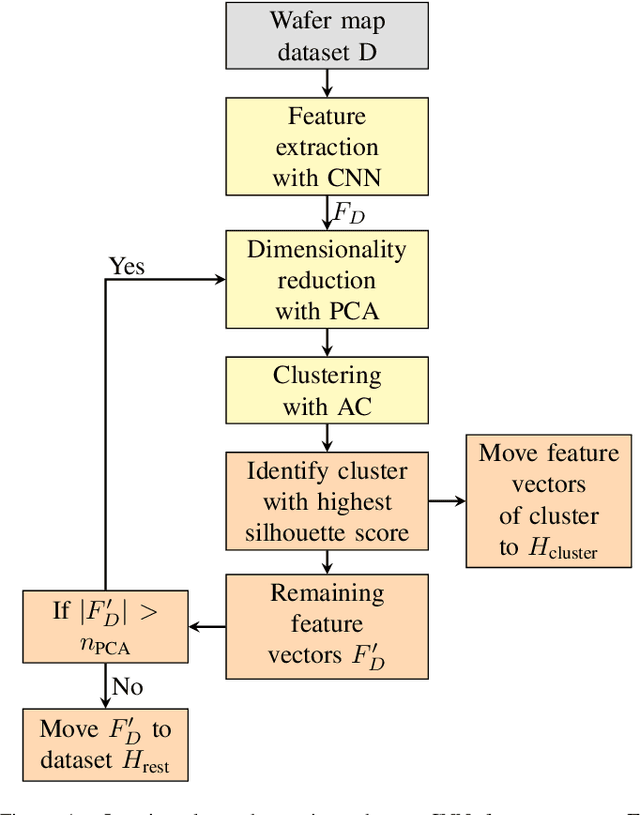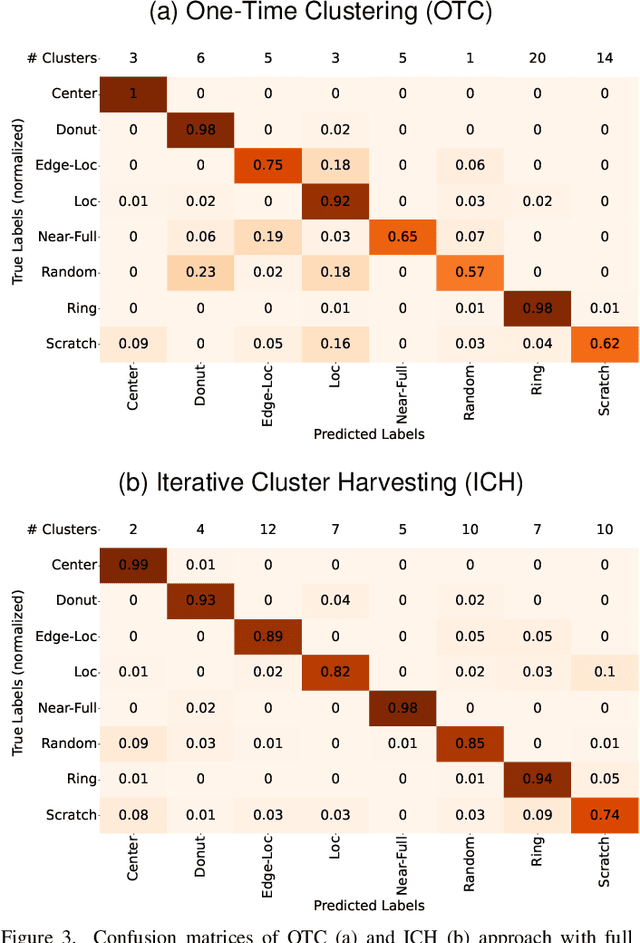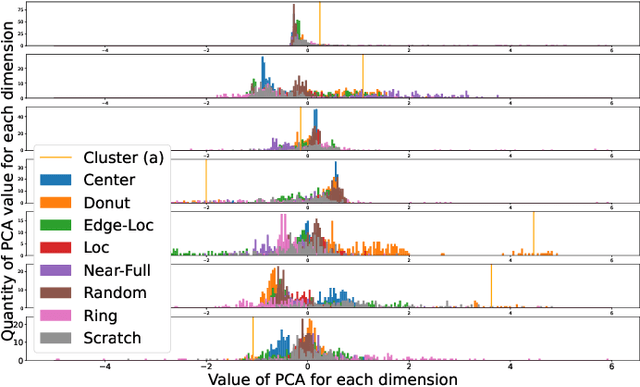Jonas Barth
Iterative Cluster Harvesting for Wafer Map Defect Patterns
Apr 23, 2024



Abstract:Unsupervised clustering of wafer map defect patterns is challenging because the appearance of certain defect patterns varies significantly. This includes changing shape, location, density, and rotation of the defect area on the wafer. We present a harvesting approach, which can cluster even challenging defect patterns of wafer maps well. Our approach makes use of a well-known, three-step procedure: feature extraction, dimension reduction, and clustering. The novelty in our approach lies in repeating dimensionality reduction and clustering iteratively while filtering out one cluster per iteration according to its silhouette score. This method leads to an improvement of clustering performance in general and is especially useful for difficult defect patterns. The low computational effort allows for a quick assessment of large datasets and can be used to support manual labeling efforts. We benchmark against related approaches from the literature and show improved results on a real-world industrial dataset.
Rapid Flow Behavior Modeling of Thermal Interface Materials Using Deep Neural Networks
Aug 09, 2022



Abstract:Thermal Interface Materials (TIMs) are widely used in electronic packaging. Increasing power density and limited assembly space pose high demands on thermal management. Large cooling surfaces need to be covered efficiently. When joining the heatsink, previously dispensed TIM spreads over the cooling surface. Recommendations on the dispensing pattern exist only for simple surface geometries such as rectangles. For more complex geometries, Computational Fluid Dynamics (CFD) simulations are used in combination with manual experiments. While CFD simulations offer a high accuracy, they involve simulation experts and are rather expensive to set up. We propose a lightweight heuristic to model the spreading behavior of TIM. We further speed up the calculation by training an Artificial Neural Network (ANN) on data from this model. This offers rapid computation times and further supplies gradient information. This ANN can not only be used to aid manual pattern design of TIM, but also enables an automated pattern optimization. We compare this approach against the state-of-the-art and use real product samples for validation.
CAD2Real: Deep learning with domain randomization of CAD data for 3D pose estimation of electronic control unit housings
Sep 25, 2020



Abstract:Electronic control units (ECUs) are essential for many automobile components, e.g. engine, anti-lock braking system (ABS), steering and airbags. For some products, the 3D pose of each single ECU needs to be determined during series production. Deep learning approaches can not easily be applied to this problem, because labeled training data is not available in sufficient numbers. Thus, we train state-of-the-art artificial neural networks (ANNs) on purely synthetic training data, which is automatically created from a single CAD file. By randomizing parameters during rendering of training images, we enable inference on RGB images of a real sample part. In contrast to classic image processing approaches, this data-driven approach poses only few requirements regarding the measurement setup and transfers to related use cases with little development effort.
 Add to Chrome
Add to Chrome Add to Firefox
Add to Firefox Add to Edge
Add to Edge